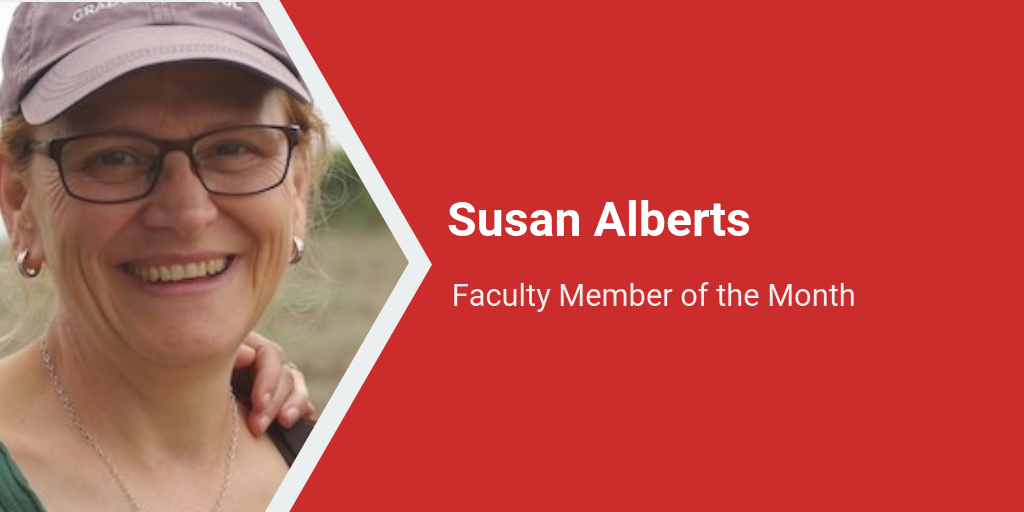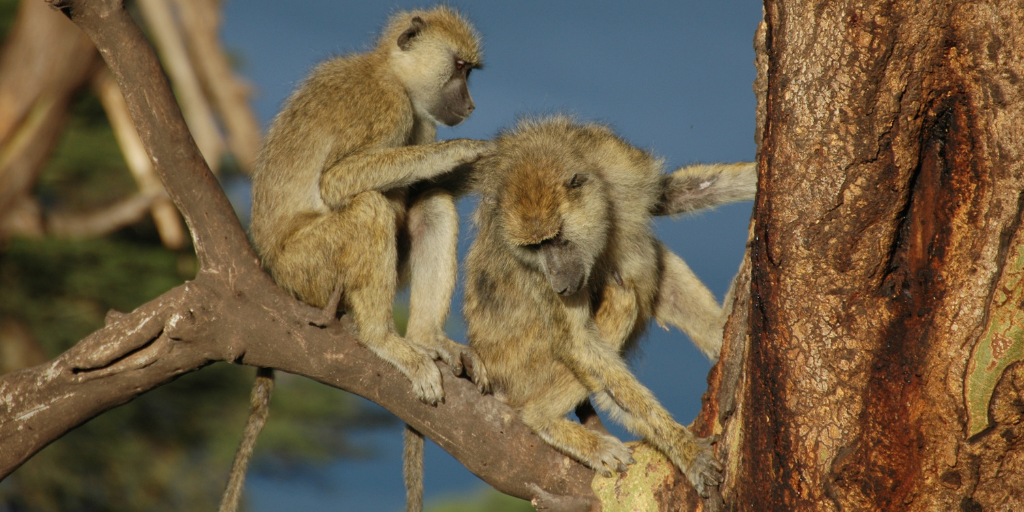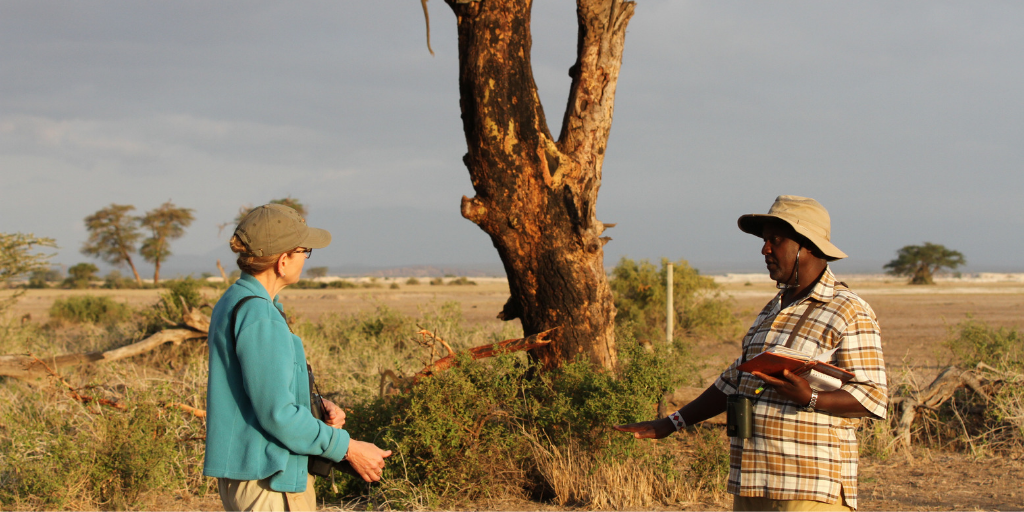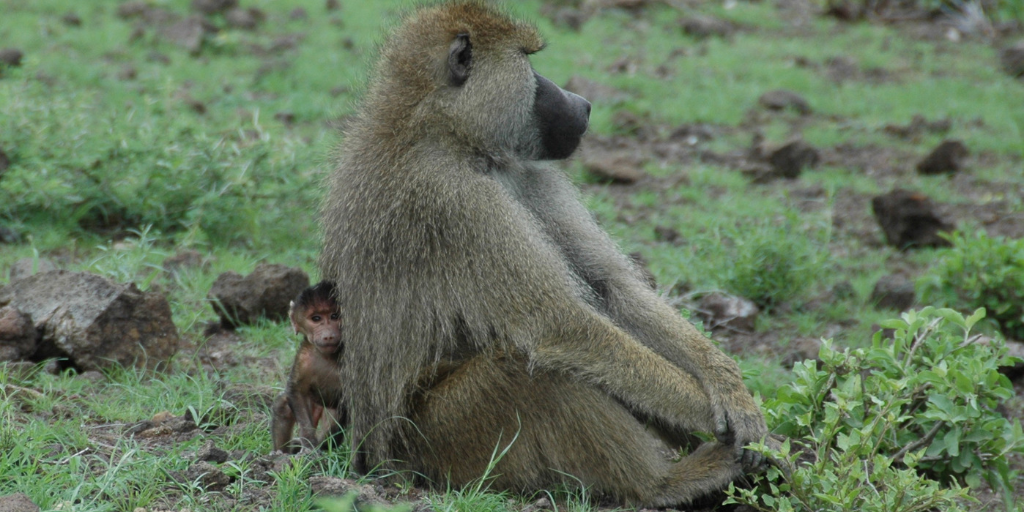“I became captivated by the power of scientific explanation”
| 24 June, 2019 | Hannah Towfiq |
|

|

Susan Alberts is our Faculty Member of the Month. Susan is the current Chair of the Department of Evolutionary Anthropology at Duke University. In this blog, she tells us what inspired her to research animal behaviour, where she works and what she enjoys about being a member of the F1000Prime Faculty.
What do you study?
I study the ecology, behaviour, physiology, and genetics of large mammals, particularly African mammals in their natural environment. I have spent 35 years studying wild baboons in Kenya as part of the Amboseli Baboon Research Project, based in southern Kenya. I also studied the socioecology of African elephants for about 10 years, publishing work on female and male social relationships and mating behaviour, and ecological predictors of elephant group dynamics. My most recent work has focused on leveraging the rich potential of long-term, prospective, longitudinal data on the Amboseli baboons to generate insights about the social and biological determinants of reproduction and survival.

What inspired you to study Evolutionary Anthropology?
There’s so much important progress being made today, I’m aware of the accelerated rate of scientific progress in the past couple of decades, resulting from the amazing productivity tools we have at our fingertips now.
As an undergraduate at Reed College, I was initially a philosophy major. But while taking a required introductory biology course, I became captivated by the power of scientific explanation to help us understand the world. I switched to a biology major and quickly realized that I found ‘ultimate’ questions (those about evolutionary and ecological explanations for traits) more interesting to pursue than ‘proximate’ questions (those about the mechanistic underpinnings of traits). While both types of questions are essential to answer if we want to gain a full scientific explanation for any phenomenon, I felt more drawn to one than the other type. And, I have always been intrigued by social interactions and social behaviour, and how animals (including people) use social relationships to achieve goals. So, I set my path towards a career in behavioural ecology with a focus on primates.
In my senior year, I was awarded a Watson Foundation Fellowship for international travel and research. I contacted several primate field biologists about potentially spending time at their site. One of these was Jeanne Altmann at the University of Chicago. Not only did she respond to my letter (which some didn’t), she phoned me the day after she received it. Her encouragement and mentorship, from that day until now, have been formative for me. She eventually became my PhD advisor and then, after I finished my PhD, she and I became research partners and friends.
Where do you work?
I work in multiple research settings. The primary data that fuels my research is field-based. I go to my field site in Kenya three times each year to work with our permanent, on-site field team. So, I feel most closely connected to field research.

Susan in the Amboseli basin of southern Kenya, at the base of Mt. Kilimanjaro with her project manager
But I also run a wet lab, which is a hormone lab — we extract steroid hormones and a few other biological relevant compounds from baboon faecal samples and analyse patterns of interest. I used to run a genetics lab in which we performed PCR to amplify microsatellite loci from faecal-extracted DNA and analyse kinship patterns using those data. In the way we have assigned paternity to more than 500 baboons in Amboseli, giving us the largest pedigree for any wild primate population. The genetics work for the Amboseli baboon project has now shifted away from my lab, to a much more sophisticated genetics laboratory, that of my collaborator Prof. Jenny Tung, who studies functional genomics as well patterns of relatedness in the Amboseli baboons.
I became captivated by the power of scientific explanation to help us understand the world. I switched to a biology major and quickly realized that I found ‘ultimate’ questions more interesting to pursue than ‘proximate’ questions
Have you made any observations on animal behaviour when responding to stress?
The ability to mount an effective response to stress is essential for life. Stressful events happen. They are everywhere. Being insensitive to stressors — failing to appropriately fight, flee, or freeze, for instance — would be a terrible handicap. So, the theory says that it’s the loss of appropriate responses to stressors — which is thought to come with repeated, chronic exposure to stressors — that is most damaging, not the stressors themselves.
One of the things we’d love to understand more about is why some animals are more vulnerable to losing resilience in the face of stress, and we’d also love to understand the predictors of resilience. We see many differences among individual baboons that could help us understand these things, and this one of the next sets of questions we’d love to tackle.

What do you like about being a member of the F1000Prime Faculty?
One of the things we’d love to understand more about is why some animals are more vulnerable to losing resilience in the face of stress, and we’d also love to understand the predictors of resilience.
I love seeing the other recommendations that come across my desk — by being more closely connected to the F1000Prime website, I see so many more papers than I otherwise would, it’s just great. I also love being able to promote good work. There’s so much important progress being made today, I’m aware of the accelerated rate of scientific progress in the past couple of decades, resulting from the amazing productivity tools we have at our fingertips now. It’s wonderful to be able to recognize some of that progress and promote it in a wide arena.
What was your last recommendation on F1000Prime?
My most recent recommendation was Fernando Maestre’s wonderful paper entitled “Ten simple rules towards healthier research labs” in PLoS Comput Biol. 2019 04;15(4):e1006914. I love the humanity of this paper, and the way that it recognizes that good science emerges from healthy social relationships, especially in the increasingly collaborative scientific community we now work in. This fits into my current research landscape, not only because I run a lab, and I admire the principles that Maestre laid out for doing so, but also because one focus of my research is how social relationships are linked to life history outcomes in nature. It’s true in the lab too.

|



User comments must be in English, comprehensible and relevant to the post under discussion. We reserve the right to remove any comments that we consider to be inappropriate, offensive or otherwise in breach of the User Comment Terms and Conditions. Commenters must not use a comment for personal attacks.
Click here to post comment and indicate that you accept the Commenting Terms and Conditions.